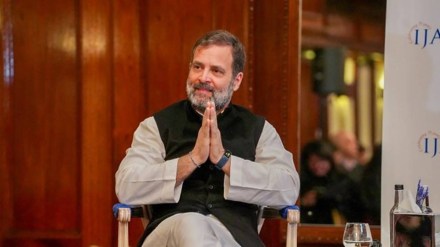A tally of around 330-350 seats for the Bharatiya Janata Party-led NDA government in the ongoing Lok Sabha elections could trigger a short-term rally in stock markets with the benchmark Nifty index breaching the 23,000-mark post-elections, Bernstein Research has said in its latest India Strategy report. On the contrary, the report paints a gloomy picture for the Indian economy and markets if the ruling NDA government fails to gain a majority and return to power at the Centre.
Listing possible scenarios of how the Lok Sabha election results could pan out for the economy and markets post-June 4, the report states that a tally of less than 270 seats for the NDA could lead to drastic effects on infrastructure-building in the near term.
Also Read: Lok Sabha Elections 2024: Can BJP repeat 2019 tally? Bernstein lists two factors to watch out for
“Funds will be diverted out of infra projects towards social initiatives. The private sector will be pushed to participate in infra, which will lead to only the most viable projects emerging as others are shelved,” Bernstein said in its report tiled ‘Modi 3.0 & Positioning into Election Results’.
The report further predicts a near-term decline in business sentiment as tax breaks and subsidies for the poor may be financed through more taxes on corporate or the rich. Foreign Direct Investment too would fall in such a scenario, the report states.
The report sees heavy profit-booking in the near term with the possibility of low or no returns this year as a likely implication for markets in the event of the Congress-led INDIA bloc government forming a government at the Centre.
Also Read: Will stock market dive on June 4? Prashant Kishor predicts the key number you should watch out for
The report, however, states that rural consumption will pick up with more money in the hands of the poor. “UBI schemes, employment for 3 million, and tax breaks will aid PFCE growth. Quick recovery possible,” the report states, adding that inflation could cross 6 per cent with 10 kg free food distribution leading to depletion of stocks and an increase in MGNREGA wages leading to higher demand for other goods.
Modi 3.0: Mission India 2047
In stark contrast, the report predicts heavy focus on manufacturing and FDI staying strong as money is diverted from subsidies towards more incentives for manufacturing firms if the NDA returns to power with more than 340 seats with the BJP alone winning more than 290 seats.
The report predicts a gradual recovery in rural consumption which is likely to stay weak in the near term. “In long term macro fundamentals will take over, leading to an exponential rise with manufacturing growth,” Bernstein states in its report. The report also expects inflation to remain in the Reserve Bank of India’s comfort range of 2-6 per cent, barring some seasonal variation due to food items.
Also Read: ‘Before June 4…’: Amit Shah has a stock market prediction ahead of Lok Sabha election results
The stock market is likely to welcome a strong mandate for the ruling dispensation with the possibility of an immediate market rally followed by short-term profit booking. The report also predicts high single-digit or low double-digit returns for Nifty this year.
“We see a short-term breach of the 23K nifty target, but a swift profit booking brings it back below that level. The 100-day agenda of the Government and expectations from the budget are other events that could play out as support catalysts. Hence, we expect some near-term buoyancy in the equity markets,” the report states.
Also Read: Elections 2024: BJP ads influenced six in 10 urban Indian voters, reveals survey
Why India needs Modi 3.0
Bernstein says in its report that continuity of power remains a crucial driver for the sustainability of the macrocycle. “As an early-stage emerging market, much is intertwined with the Government’s policies. To benefit from the structural drivers, we think India has a lot of catch-up with several Asian peers. Building infrastructure, scaling up manufacturing, building a more viable export franchise, employment, and managing inflation—the list is long. With India moving from the reform cycle to the execution cycle, continuity of power remains a crucial driver for the sustainability of the macrocycle.”
Drawng comparisons between the two terms of Prime Minister Narendra Modi with that of the UPA government, the report lists efficiency of capital use, better inflation management and a push in manufacturing as key differentiators.
“The role of Government in facilitating orderly capex is high; hence, a return of NDA is favourable for that, while a change will likely deliver haphazard growth with the risk of a shorter upcycle with structural challenges after that for those linked to capex,” the report adds.
